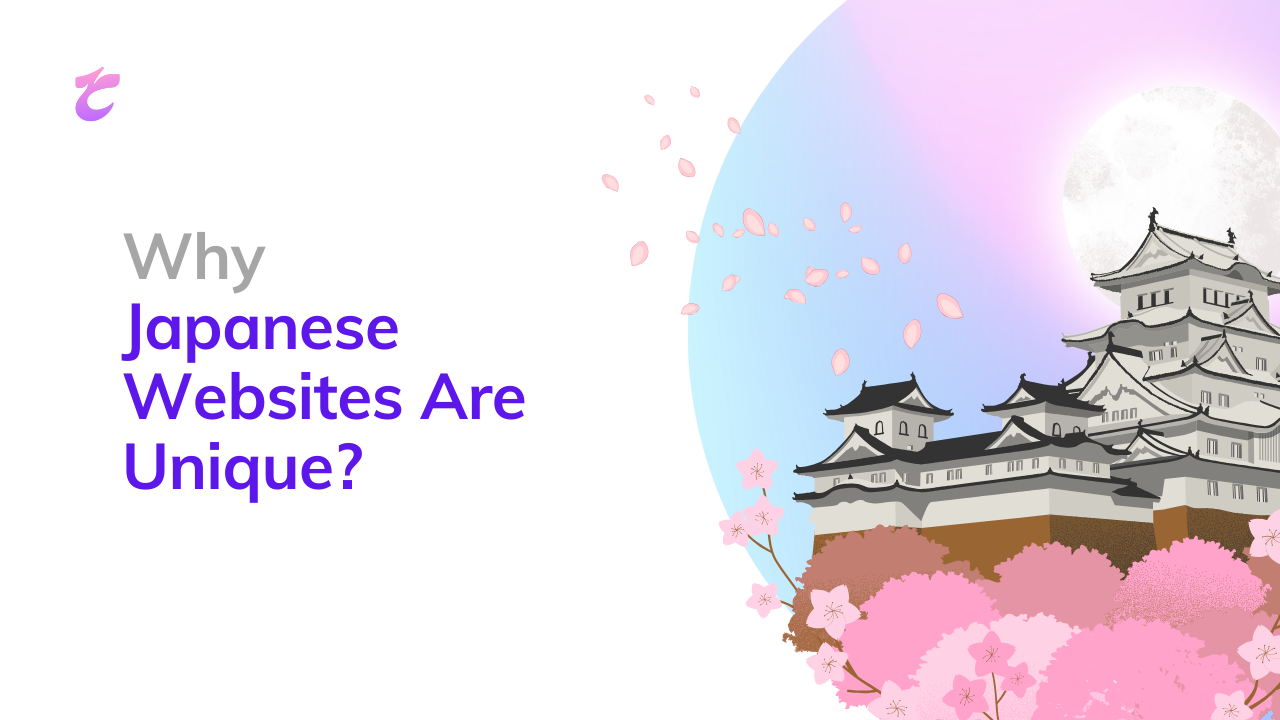Why Japanese Websites Look So Different

Strong 8k brings an ultra-HD IPTV experience to your living room and your pocket.
Visit a few Japanese websites and you’ll notice something right away, they don’t look like what you’re probably used to. Compared to the sleek minimalism favored in Western web design, Japanese sites often feel like a whirlwind of colors, flashing banners, packed menus, and animated mascots. There’s text, lots of it. Navigation options are everywhere. And scrolling feels more like an exploration than a straightforward journey.
To someone unfamiliar with the local context, this might seem chaotic, even outdated. But there’s a reason behind every element. Japanese web design isn’t about clean space and abstract simplicity, it’s about efficiency, density, and giving users as much information as possible, right up front. The choices aren’t mistakes, they’re reflections of deep cultural values, user behavior, and technological history.
So why do Japanese websites look so different? And what can we learn from them?
Let’s unravel the layers behind Japan’s distinctive web aesthetic.
Language Drives Design
At the heart of any website is language. In Japan, the written language is a complex system that combines kanji (characters borrowed from Chinese), hiragana, and katakana. These three scripts are often used together on the same page, with kanji conveying core meaning, hiragana providing grammar and fluency, and katakana typically used for foreign words or emphasis.
This blend makes for a typographic experience unlike any in the West. Fonts have to accommodate thousands of characters, sometimes over 10,000 glyphs, making web typography more complex and less flexible. That’s why it’s common for Japanese websites to use text embedded in images to maintain precise visual control, especially for headlines or buttons.
But the complexity doesn’t stop at fonts. Japanese is dense, a single character can convey as much meaning as an entire word in English. This allows for a lot of information to be displayed in a small space, and users are used to absorbing it that way. What looks overwhelming to someone from the US or Europe might feel perfectly readable, and even efficient, to a Japanese user.
All-In-One Pages
Western design often focuses on hierarchy, white space, and emotional storytelling. Visual clarity is prized, and the assumption is that too much information up front will scare users away. But in Japan, clarity is achieved differently, not by reducing content, but by presenting it in a structured, all-in-one-place manner.
Take Japanese e-commerce websites, for example. Rather than minimal product pages with sleek icons and soft backgrounds, you’ll find grids of product images, blinking discount banners, countdown timers, and rows of special offers. It’s dense, it’s bright, and it’s packed. And it works.
This approach reflects a different idea of trust and usability. Japanese consumers tend to expect comprehensive detail upfront. They want to see specs, comparisons, deals, delivery timelines, and reviews, all at a glance. This style might clash with global trends in UX, but it’s tailored for a population that values preparedness and thoroughness in decision-making.
Legacy of Early Mobile
To truly understand how Japan’s web design developed, you need to rewind to the early 2000s. Long before iPhones and Androids took over the world, Japan was already deeply connected through mobile internet. Flip phones, or keitai, were everywhere, and users accessed weather updates, train schedules, and online shopping through compact, text-heavy interfaces.
These early mobile sites shaped user expectations. People got used to navigating through dense menus and long scrolls of information on small screens. When smartphones did eventually take over, they didn’t bring a radical shift in user behavior, Japanese users already expected rich information in compact digital spaces.
This history explains why many Japanese websites still have layouts optimized for older mobile behavior, vertically structured, content-heavy, and with fewer assumptions about touch gestures or visual storytelling.
Aesthetic Roots
Beyond the technical and historical factors, there’s a more poetic layer at play in Japanese design, a sense of beauty rooted in cultural philosophy. While much of the modern web world looks to Western minimalism, Japanese aesthetics are shaped by principles like wabi-sabi (finding beauty in imperfection) and ma (the space between things).
But here’s the twist, these principles don’t always translate into minimalist websites. Instead, they manifest in other ways, through careful spacing, thoughtful layering, seasonal colors, and harmonious textures. A Japanese website might have a lot going on, but it’s not random. It’s intentional.
It’s also worth noting that traditional Japanese print media, like newspapers, advertisements, and flyers, have long embraced dense layouts filled with text, images, and symbols. These influences seep naturally into digital design, too.
Trust Through Detail
One of the more charming aspects of Japanese websites is their frequent use of mascots, illustrations, and anthropomorphized icons. Whether it’s a bank, a hospital, or a government agency, don’t be surprised to see a friendly cartoon animal or smiling robot guiding you through the site.
This “kawaii” (cute) culture isn’t just a quirky style choice. It serves a function. In a society where formality and hierarchy can create distance, cuteness adds warmth and approachability. A tax portal might feel intimidating, but with a friendly owl mascot helping you file your paperwork, it suddenly becomes less so.
Amid all the data and text, the friendly face of a mascot helps anchor the experience emotionally. It’s UX design that acknowledges not just the logic of the user, but their feelings, too.
Trends Take a Backseat
If you’ve ever tried designing a site for Japanese users, you’ll notice that many global design trends just don’t stick the same way. Things like parallax scrolling, ghost buttons, or oversized hero images might feel sleek in a US or European context, but in Japan, they can miss the mark.
That’s because trends are often built around aesthetic movements, not usability goals. Japanese web design has always leaned toward function over fashion. Sites are updated with seasonal promotions, flash sales, and service announcements, not just new visuals. Designers prioritize speed, efficiency, and clarity, even if it comes at the cost of looking “modern” by Western standards.
The desktop experience still matters deeply for business, especially in industries like education, healthcare, and government. And when sites are updated frequently, sometimes daily, maintaining consistency and speed often outweighs the need for slick innovation.
Design With Empathy
The more you study Japanese web design, the more you realize that “good design” can’t be defined by a single global standard. Every aesthetic choice, every dense menu or bold banner, is rooted in specific user needs, cultural history, and communication styles.
For designers working in multicultural contexts, Japan is a reminder that empathy matters more than trends. It’s not about whether a site looks modern, it’s about whether it serves the people using it.
In one of our past projects where we collaborated with a client targeting the Japanese market, we found ourselves rethinking everything from button placement to typography strategy. What seemed like too much information at first quickly made sense when we considered how Japanese users prefer to browse. That shift, from aesthetics to empathy, is one of the most valuable lessons any designer can carry forward.
What’s Next?
It’s tempting to think that Japanese web design will eventually “catch up” with the minimalist, app-like interfaces common in the West. But perhaps that’s the wrong way to think about it.
Japanese websites aren’t behind, they’re just aligned to different priorities. As broadband speeds increase, mobile behavior evolves, and global design tools become more accessible, we are seeing some hybrid approaches emerge. Newer startups and media platforms sometimes blend the density of traditional design with the sleekness of modern UI patterns.
But even in those evolutions, the core values remain, clear information, trust through transparency, and a distinctly human touch.
Conclusion
Japanese web design isn’t a puzzle to be solved, it’s a culture to be understood.
From the way language shapes typography, to the role of mascots in building emotional connection, to the dense layouts that reflect a need for thoroughness, every part of the experience tells a story. And once you stop viewing those sites through a Western lens, and start appreciating them for what they are, the chaos starts to feel like order.
So the next time you land on a Japanese site and feel overwhelmed, pause for a moment. Look closer. You might be seeing a different kind of elegance, one that’s rooted not in silence, but in fullness.
Understanding these cultural nuances is key to creating effective Japanese web design that resonates deeply with users. Whether you’re working with a web design agency to craft a site for a specific market or adapting your global presence, approaching the project with a thoughtful understanding of both form and function can elevate your digital presence and build deeper connections with your audience.
Note: IndiBlogHub features both user-submitted and editorial content. We do not verify third-party contributions. Read our Disclaimer and Privacy Policyfor details.


